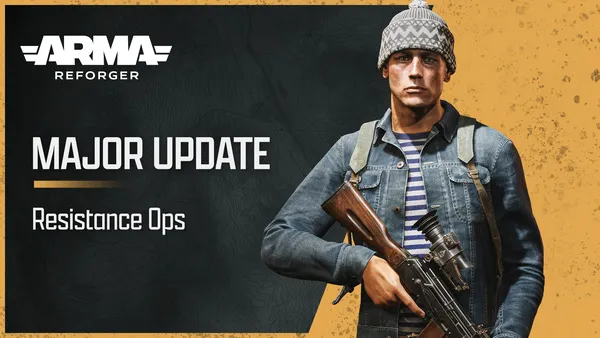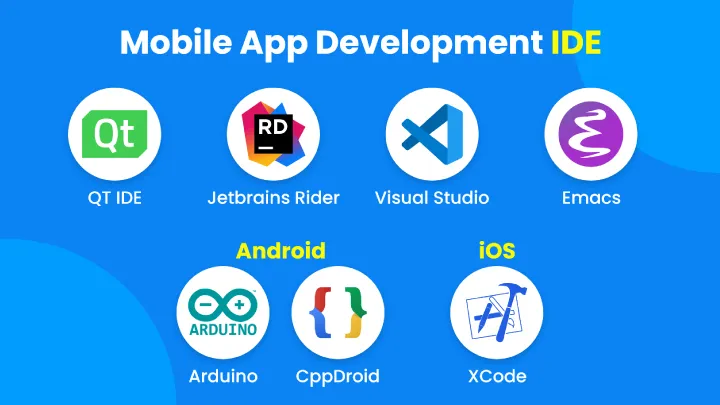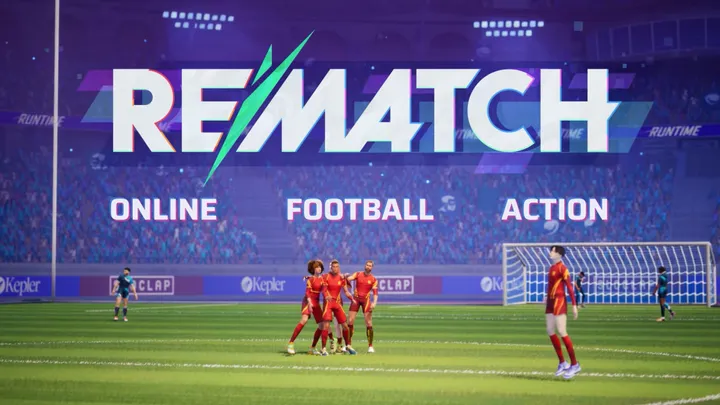Introduction
Arma Reforger, developed by Bohemia Interactive, represents a significant step forward in military simulation games, offering a deeply immersive experience through its vast open-world environment, realistic combat mechanics, and strategic team-oriented gameplay. One of the standout features of Arma Reforger is its dynamic and detailed AI behavior system, which plays a central role in shaping the game’s immersion and challenge. However, despite the strides made in this area, the AI system in Arma Reforger presents several challenges, particularly in terms of its decision-making, adaptability, and coordination in combat situations. These challenges can significantly impact player experience, especially in more complex, high-stakes missions.
This article delves into the intricacies of the AI behavior system in Arma Reforger, analyzing its strengths, weaknesses, and the challenges it poses to players. We will explore how AI enemies and allies behave in various scenarios, the ways in which Bohemia Interactive has sought to improve AI decision-making, and potential solutions that could make the AI more intuitive and effective. By understanding these dynamics, players can better prepare for encounters and work toward improving the overall AI experience in Arma Reforger.
1. The Foundations of AI in Arma Reforger
The AI system in Arma Reforger is built on a foundation of complex algorithms designed to simulate the decision-making processes of both friendly and hostile forces. Unlike simpler AI in many other games, Arma Reforger’s AI is intended to mimic realistic military behavior, including tactical maneuvers, engagement strategies, and adaptive responses to changing conditions.
- Basic AI Behaviors: At its core, the AI in Arma Reforger is designed to respond to a variety of stimuli, including player actions, environmental factors, and the broader tactical situation. Enemies may take cover when under fire, try to flank or ambush players, and work in concert with other AI units to achieve their objectives. Allies, on the other hand, are expected to follow commands, coordinate movements, and provide support when needed.
- AI’s Tactical Decision-Making: One of the key aspects of the AI is its ability to make decisions based on its surroundings. For example, an enemy unit might retreat when outnumbered or attempt to find better cover if it’s under heavy fire. Similarly, friendly AI soldiers may use suppression fire, move into advantageous positions, or fall back when their health is low or the situation becomes too dire. This dynamic decision-making is a central feature of Arma Reforger’s realism.

2. AI Awareness and Response to Player Actions
AI behavior in Arma Reforger is heavily influenced by the player’s actions, creating a reactive and interactive combat environment. However, this system is not without its flaws, especially when it comes to the AI’s situational awareness and response time.
- Enemy Detection: The enemy AI in Arma Reforger is designed to detect the player through a combination of visual and auditory cues. While the system works effectively in most situations, there are notable inconsistencies. For example, AI may fail to notice players who are hiding in plain sight or may react too slowly when they hear gunfire. This can break immersion, as players may feel that AI enemies are either too oblivious or unrealistically aware of their presence.
- Response Time and Aggression: When an enemy AI detects a player, the reaction is not always consistent. In some cases, the AI may respond with immediate aggression, charging directly at the player, while in others, they may hesitate, taking too long to return fire or reposition. This inconsistency can make battles feel unpredictable and frustrating, especially when enemy units fail to respond with the appropriate level of urgency.
3. Coordination Between Friendly AI Units
In Arma Reforger, friendly AI units are crucial for completing missions, providing support, and following orders. The game’s AI system allows players to command squads of soldiers, directing them to specific locations, attacking enemies, or providing suppression fire. However, there are several challenges associated with friendly AI coordination.
- Following Orders: While friendly AI units are generally good at following basic commands, their ability to execute more complex strategies can be limited. For example, they may struggle to effectively coordinate attacks on multiple fronts or work together to achieve tactical objectives. This lack of coordination often leads to inefficient or overly simplistic strategies, with AI units failing to adjust based on the evolving battle.
- AI Unit Positioning: A major issue with friendly AI in Arma Reforger is their poor positioning in combat. Even when given specific orders to hold positions or take cover, friendly units may choose suboptimal spots or fail to recognize the best tactical locations. This leads to situations where AI soldiers are left exposed or unable to provide adequate support, which undermines the effectiveness of the player’s strategy.
4. The Impact of AI Decision-Making on Gameplay
The way AI makes decisions has a significant impact on how players approach each mission. Ideally, AI should behave in a way that challenges players without feeling overly predictable or unreasonably difficult. However, the current AI decision-making process in Arma Reforger often leads to frustrating or inconsistent gameplay.
- Predictability vs. Adaptability: While the AI does exhibit some adaptability, such as changing tactics when the situation demands it, its behavior often feels predictable. Enemies may take the same routes to attack, use the same cover spots, or perform the same maneuvers, making it easier for players to anticipate and counter their actions. In more complex situations, the lack of true adaptability can make the game feel less dynamic, as players are forced to exploit the same weaknesses repeatedly.
- The Role of AI in Immersion: The behavior of AI units plays a significant role in the immersion of Arma Reforger. When AI behaves realistically, players feel that they are part of a living, breathing battlefield, where every decision matters. However, when the AI exhibits unnatural behavior, such as erratic movements or illogical decision-making, the immersion breaks down, and the game loses some of its tension and excitement.
5. Tactical Limitations of the AI
Arma Reforger’s AI has a fundamental tactical limitation when it comes to responding to complex battlefield scenarios. This issue is most apparent in large-scale engagements, where AI units are expected to work together to secure objectives, cover positions, and adapt to changing circumstances.
- Flanking and Ambushing: While the AI can occasionally perform basic flanking maneuvers, its ability to execute coordinated ambushes or multi-pronged attacks is limited. This is especially true when the AI is tasked with working in smaller squads or when multiple AI units are needed to achieve a goal. In larger engagements, the AI can feel disjointed and ineffective, relying too much on basic tactics rather than creating dynamic, multi-layered strategies.
- Handling Suppressive Fire: Suppressive fire is an essential tactic in military combat, yet the AI in Arma Reforger often struggles to use this technique effectively. While enemy units will sometimes lay down suppressive fire, they may fail to capitalize on it or move to more advantageous positions. Friendly AI units, on the other hand, may become too fixated on covering fire, neglecting the need to advance or complete objectives.

6. The Problem of AI Unit Behavior in Urban Environments
Urban warfare is one of the most challenging environments for AI in Arma Reforger, and this is an area where the AI system shows considerable weaknesses. The complexity of buildings, narrow streets, and verticality in urban settings can overwhelm the AI’s decision-making, leading to frustrating moments for players.
- Building Clearance and Room-to-Room Combat: While Arma Reforger allows for detailed urban combat scenarios, the AI often struggles with room clearing and close-quarters engagements. Friendly units may take unnecessary risks, entering buildings without proper cover or failing to react quickly to enemy movements. Similarly, enemy AI often performs predictably in urban environments, taking the same routes and failing to utilize the environment to its advantage.
- Navigating Verticality: The verticality in urban environments, with rooftops and multi-story buildings, adds another layer of complexity to combat. Unfortunately, the AI’s ability to navigate vertical spaces is limited, meaning it often fails to take full advantage of elevated positions for either offense or defense. This results in less dynamic gameplay, where urban combat becomes more about fighting over ground-level positions rather than utilizing the full range of available terrain.
7. Combat AI in Large-Scale Battles
In large-scale battles, where multiple squads of AI must work together to secure objectives or repel player forces, the behavior of AI units becomes even more critical. Unfortunately, the coordination between AI units in these scenarios is often lacking, making large-scale engagements feel disjointed and chaotic.
- Squad Coordination: When multiple AI squads are involved in an engagement, the lack of coordination between them is evident. Friendly AI units may fail to support each other, leading to isolated engagements where some squads are left unsupported. Enemy AI, while often aggressive, can also struggle with coordinating multi-squad maneuvers, resulting in poorly executed attacks that fail to capitalize on opportunities.
- Fluctuating Combat Intensity: Large-scale battles in Arma Reforger can feel inconsistent in terms of combat intensity. Sometimes, the AI will engage with relentless aggression, while at other times, the battle will stagnate as units fail to react to the evolving situation. This lack of consistent combat rhythm undermines the excitement and immersion of large-scale engagements.
8. The Role of AI in Mission Difficulty
One of the most significant challenges that Arma Reforger faces is balancing the difficulty of missions based on AI behavior. While the game offers a broad range of difficulty settings, the AI’s behavior can feel either too passive or overly aggressive, depending on the situation.
- Difficulty Scaling: The scaling of difficulty in Arma Reforger is closely tied to AI behavior. On higher difficulty settings, AI units tend to be more aggressive, accurate, and responsive to player actions. However, this can lead to frustration if the AI becomes too overpowered, making it difficult for players to succeed without relying heavily on the environment or exploiting AI weaknesses.
- Mission Design and AI Adaptability: Mission designers often struggle with balancing AI behavior to provide a challenge without overwhelming players. In some cases, the AI’s unpredictability can create difficulty spikes, where players face sudden, overwhelming opposition or encounter situations that feel unfair due to AI’s inconsistent responses.

9. Potential Solutions and Future Improvements
Bohemia Interactive is aware of the challenges posed by the AI system in Arma Reforger, and ongoing updates and patches are likely to improve the AI behavior over time. Several areas can be targeted for improvement to make the AI more responsive, adaptive, and immersive.
- Improved Tactical AI: Enhancing the AI’s ability to plan and execute complex tactics would be a significant step forward. This includes better coordination between units, more advanced use of cover and suppressive fire, and the ability to adapt to player strategies in real-time.
- Better Urban AI: Improvements in urban combat AI, particularly in room clearing and navigating vertical spaces, would make a huge difference in the quality of urban missions. This would provide a more realistic and engaging experience for players in these challenging environments.
- Consistency in Response Times: One of the most significant improvements could be ensuring that AI units react more consistently and appropriately to stimuli. This would make combat feel less erratic and more believable, increasing immersion for players.
10. Conclusion: The Future of AI in Arma Reforger
Arma Reforger’s AI system represents a significant leap forward in military simulation, but it is not without its challenges. While the AI demonstrates a high level of realism in certain areas, it also exhibits weaknesses that detract from the overall experience. From inconsistent response times to poor coordination in large-scale battles, the AI’s behavior requires ongoing refinement to meet the high standards set by other aspects of the game. Bohemia Interactive’s continued efforts to address these issues will likely lead to a more dynamic and engaging experience for players, ensuring that Arma Reforger remains one of the most immersive military simulators available.

















